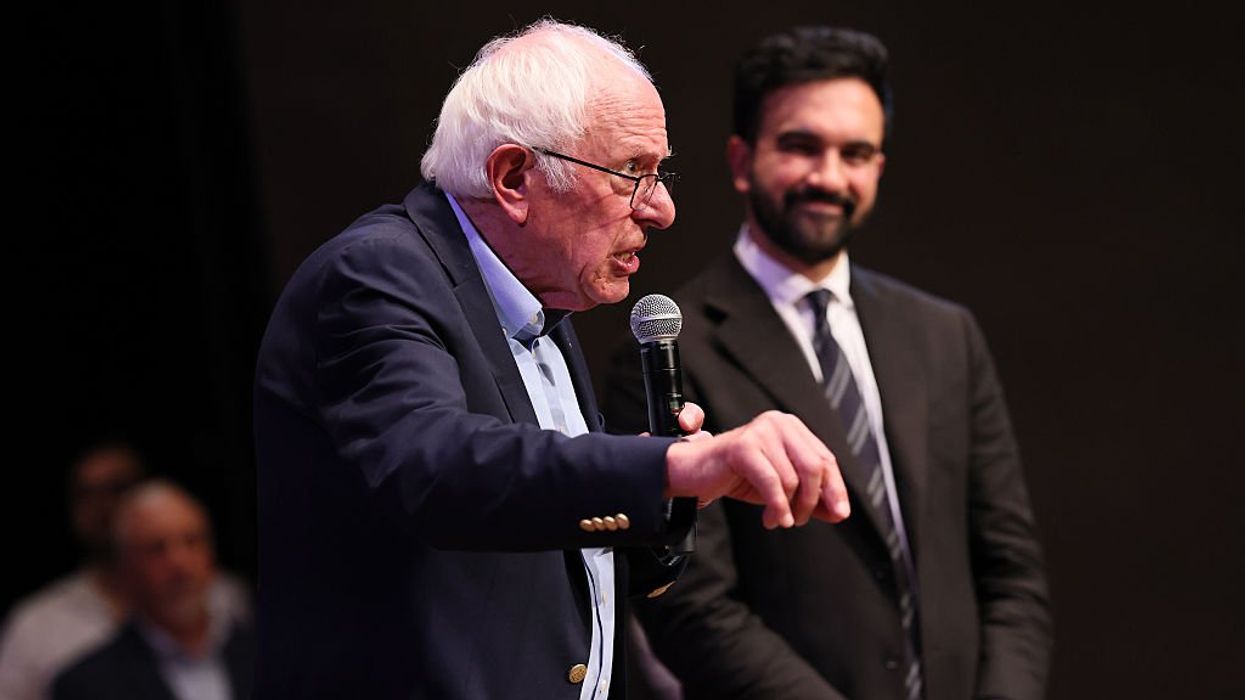At a rally in support of Zohran Mamdani, Senator Bernie Sanders made a familiar declaration: “My understanding is you won the primary, correct?” he asked, and then added: “I find it hard to understand how major Dem leaders in New York are not supporting the Democratic candidate. So we have another fight on our hands—the future of the Democratic Party.”
The words are vintage Bernie: Indignant, direct, a rallying cry for fairness. And yet, that he expects us to believe that he finds the behavior of the Democratic establishment “hard to understand” is nothing short of astonishing. After decades of first-hand evidence that the Democratic Party is structurally hostile to his politics, his campaigns, and his base, Bernie is not able to understand the party’s behavior and still thinks this is a fight inside the party? He still believes that the institution can be salvaged?
How is this possible?
This is the same Bernie Sanders who was cheated not once but twice: First in 2016, when the Democratic National Committee tipped the scales for Hillary Clinton, and again in 2020, when party insiders consolidated behind Joe Biden after Sanders had won the early states and was poised to take control. Then, in 2024, the party leadership smothered democracy altogether by refusing to allow any serious challengers to Biden, despite his historically low approval ratings, only to pass the torch to Kamala Harris, an equally eviscerated and unpopular candidate, when Biden faltered.
The pattern is clear: When the stakes are high, the party does not let the people decide. It chooses and decides for them. Sanders, more than anyone, should know this.
It’s not just that the Democratic Party has delivered weak candidates time and again—Mondale in 1984, Dukakis in 1988, Kerry in 2004, Hillary Clinton in 2016, Joe Biden in 2020 and 2024. Even when it has produced winners, it has rarely produced politicians who deployed their talents to deliver on the premises that they ran on.
Bill Clinton, a strong master politician, spent his energies not expanding the safety net or challenging corporate greed but instead squandered his political capital to retool and tighten a wobbly Democratic machine into a sleek, corporate, establishment engine. He branded it as “New Democrat” centrism, but in practice, it meant triangulation, deregulation, and the open embrace of Wall Street. Clinton’s skill shored up the party’s institutional power even as it hollowed out its democratic legitimacy. The machine he fortified went on to produce Al Gore in 2000—yet another weak candidate, unable to win even against George W. Bush despite co-presiding over the prosperity of the 1990s.
The Clintonized party never looked back. Its model became the template for the next generation: Barack Obama in 2008 and 2012, who fused Clinton’s corporate-friendly politics with rhetorical brilliance. Obama had the chance to reshape the country after the financial crash, with both houses of Congress behind him. Instead, he governed as a centrist, as per the dictates of the DNC, bailed out Wall Street, left millions of homeowners stranded, and treated bipartisanship as an end in itself.
Then came Hillary Clinton, the purest product of the machine her husband had built. In 2016, she embodied its corporate ties, its disdain for grassroots energy, its belief that grand narrative and inevitability could substitute for vision. Against Donald Trump—a historically unpopular candidate—she lost.
What the party excels at is image management. It gives us soaring speeches, appealing personalities, and occasionally even authentic movements—but then smothers those movements the moment they threaten the party’s donors, institutions, or hierarchy.
Sanders himself was the most powerful example. His 2016 run electrified millions of young and working-class voters. He built a mass movement that raised money without billionaires and spoke plainly about issues most politicians dodge: Medicare for All, free public college, taxing the ultra-rich. In 2020, he was off to a seemingly unstoppable start, dominating early primaries and amassing an impressive delegate lead—but once again, the party apparatus mobilized, marshaled endorsements, and funneled resources to Joe Biden, crushing Sanders’ momentum almost overnight. And yet, instead of walking away from the machine that crushed him, he returned to it, campaigning for Biden.
The man who has spent a career calling himself an “independent” has, in practice, never broken free from the gravitational pull of the Democratic Party.
So one asks: Why does Sanders cling to the idea of the Democratic Party at all?
Some would say it’s pragmatism: the U.S. electoral system makes it nearly impossible to win without one of the two major parties. Others argue it’s loyalty to the millions of voters who still identify as Democrats or to the infrastructure that gives progressives at least a foothold.
But in reality, clinging to the party is a strategic dead end, a self-fulfilling, doomed prophecy. The U.S. party system is not merely an institution; it is a brand. It exists to perpetuate itself, not to deliver solutions. Both major parties have mastered the art of corralling voter discontent into safe, predictable channels. Both rely on ideological loyalty that prevents voters from crossing lines to support the policies they actually agree on.
And here lies the deeper tragedy: There already exists a broad, bipartisan consensus on many of the issues Sanders has championed his whole life. According to YouGov polling, Americans across the political spectrum support lowering prescription drug costs, expanding infrastructure investment, raising the minimum wage, breaking up corporate monopolies, and even expanding renewable energy. On issue after issue, the people are ahead of the politicians. In other words, the barrier is not the public. It is the parties.
What if Sanders, instead of lamenting the future of the Democratic Party, had the courage to declare that the party system itself is the problem? What if he used his enormous credibility to call for a politics beyond party and ideology—one rooted not in loyalty to a brand but in mobilizing the overwhelming consensus of the people themselves?
Imagine Sanders in 2016 or 2020 refusing to endorse the Democratic nominee and instead helping to launch a truly independent political movement. Imagine him turning his millions of small-dollar donors and volunteers into the nucleus of a permanent, nonpartisan force—one that fights not for Democrats or Republicans but for policies that a majority of Americans already support.
It’s not hard to picture. It’s simply hard to imagine him doing it. Because for all his rhetoric about independence, Sanders has chosen the path of the politician, not the revolutionary.
Bernie Sanders deserves immense credit for breaking the silence around inequality, for naming the billionaire class as the root of the problem, and for inspiring millions who felt excluded from politics. But his greatest failure is his refusal to take the logical next step.
The real solution is to break free from the shackles of party politics altogether. To stop pretending that the Democratic Party can be reformed from within. To build power not on labels, not on loyalty to a party brand, but on the simple truth that the people already agree on the major issues.
The future of politics is not blue or red, not even purple. The future is post-party. And the sooner we admit that, the sooner we can stop wasting our energy on institutions designed to fail us—and start building something new.
Ahmed Bouzid is the co-founder of The True Representation Movement.



















